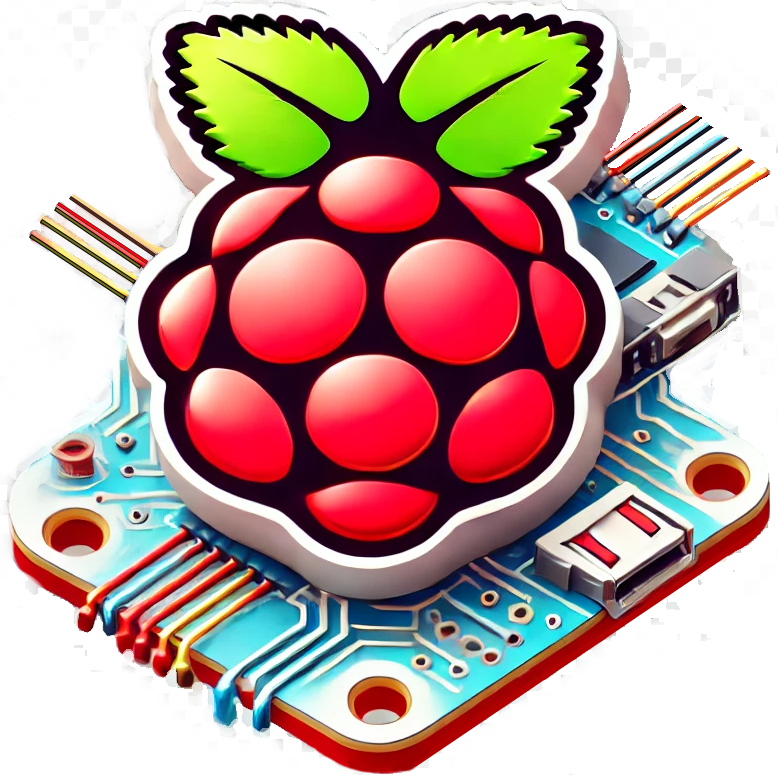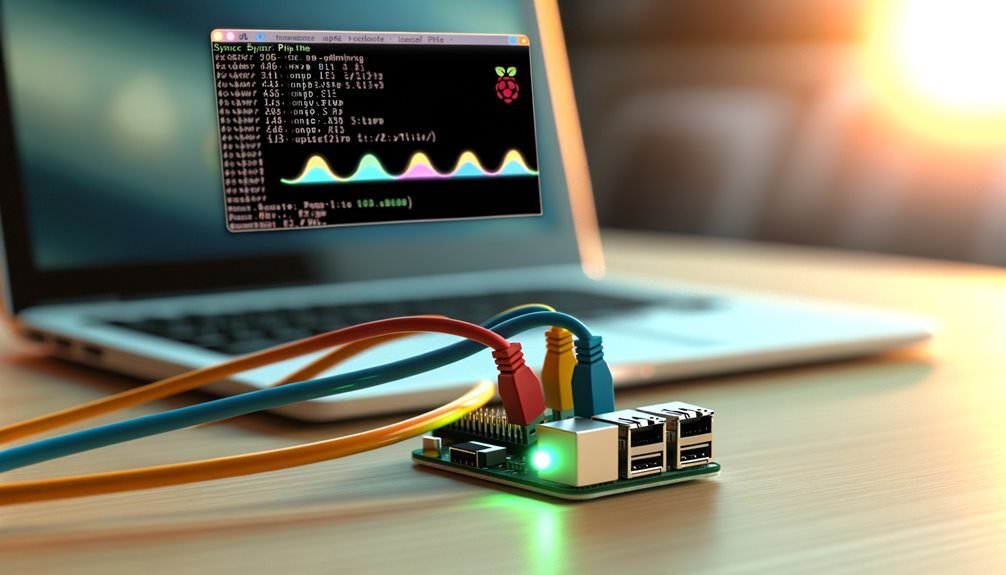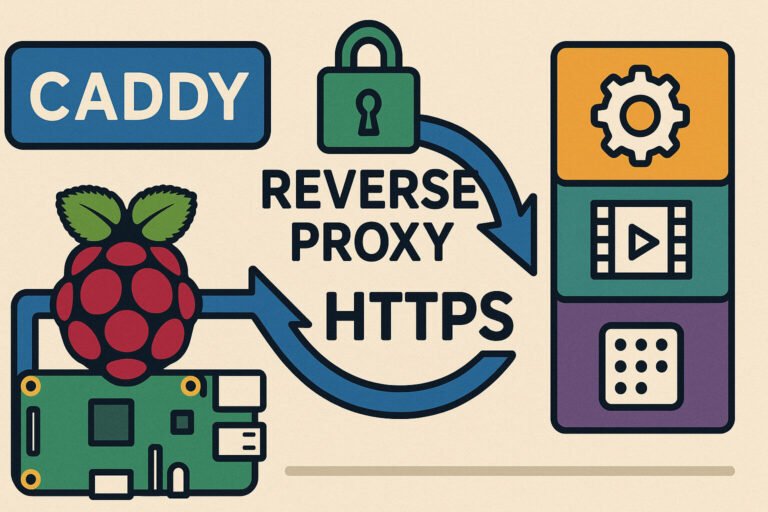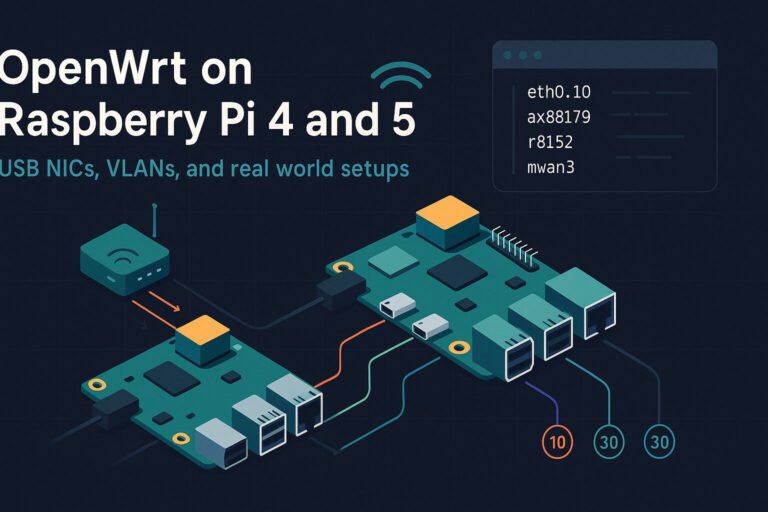Syncthing on Raspberry Pi, Family Device Sync and Versioning
Introduction
Syncthing Raspberry Pi setups aren’t just for tinkerers anymore. If you’ve got a family that shares photos, homework, and five versions of the same spreadsheet titled “Final-Final-Revised”, you probably need something better than hoping Google Drive doesn’t freak out. I use Syncthing on a Raspberry Pi to handle syncing across a mess of family devices—phones, tablets, laptops—and yeah, it actually works.
It runs quietly in the background, doesn’t cost you monthly fees, and unlike some cloud services, it doesn’t randomly rename your documents to “conflicted copy (1)”. The versioning alone has saved us from toddler file-deletion disasters more than once. And no, you don’t have to be a Linux wizard. If you can copy a file and click a few buttons, you’re good to go.
This isn’t magic—it’s just smart file syncing, with your Raspberry Pi doing all the heavy lifting like a digital pack mule you don’t have to feed.
Key Takeaways
- Syncthing on a Raspberry Pi enables private, secure sync for home users
- It avoids cloud lock-in and works across devices and platforms
- Versioning protects files from accidental deletion or edits
- A small setup effort provides ongoing benefits without extra costs
- Ideal for families managing shared files across many devices
What is Syncthing?
Peer-to-peer file sync without the server headaches
Syncthing is a self-hosted, peer-to-peer sync application. It lets devices talk directly to each other over your local network or the internet—without sending your data to any outside server. That means your files stay yours, and they don’t end up on some random server farm in Utah.
Each device gets a unique ID, kind of like a digital fingerprint, and you explicitly choose which devices get to talk to each other. No surprise syncing to a stranger’s laptop. Syncthing uses TLS to secure every transfer and SHA256 to check your files weren’t tampered with. So yeah, it’s paranoid—in a good way.
How Syncthing works with folders and devices
You set up “folders” in the Syncthing interface, each tied to a real path on your system—like /home/pi/Sync/Photos. Then you share that folder with another device, like your partner’s phone or your kid’s tablet. Only devices you’ve manually linked can access these folders.
Every time a file changes, it checks the hash, compares it to what the other device has, and if something’s different, it syncs. Nothing extra. No ads. No cloud logins. Just local control.
Why Use a Raspberry Pi?
Small, silent, and cheap—what’s not to like?
A Raspberry Pi isn’t just for retro gaming or that weather station you forgot to finish. It’s a tiny computer that sips power, runs cool, and doesn’t take up more desk space than a coaster. That’s a big win for anyone who wants 24/7 file syncing without a loud fan kicking on every five minutes.
Ideal hardware for home syncing
The Raspberry Pi 4 is powerful enough to run Syncthing for most family use cases. Even the Zero 2 W handles light syncing tasks like homework folders or photo backups. Add a good microSD card or plug in a USB SSD, and you’ve got a low-cost home file server that doesn’t eat electricity like a gaming PC.
You can also run it headless—no monitor needed. Set it up once, tuck it behind your router, and forget about it until someone deletes a folder they weren’t supposed to.
Network and storage considerations
Wi-Fi works fine for small files, but if you’re syncing videos or full backups, plug in an Ethernet cable and save yourself the buffering pain. You’ll also want to think about your storage layout—Syncthing doesn’t care if files live on an SD card or external USB drive, but your Pi will run better with something faster than a $5 knockoff microSD.
Preparing the Raspberry Pi for Syncthing
Get your Pi ready to do real work
Before you start syncing your life’s digital chaos, your Raspberry Pi needs to be set up like the reliable file mule it’s meant to be.
Install Raspberry Pi OS
Start with Raspberry Pi OS Lite if you don’t need a desktop environment. It boots faster, uses fewer resources, and does everything you need for Syncthing. Flash it with something like Raspberry Pi Imager or Balena Etcher, enable SSH by dropping a file named ssh in the boot partition, and you’re off.
Install Syncthing on the Pi
Use the terminal. Update the package list:
sudo apt update && sudo apt install syncthingRun Syncthing as a systemd service tied to your user (like pi):
sudo systemctl enable syncthing@pi
sudo systemctl start syncthing@piNow open your browser to http://<your_pi_ip>:8384 and you’re looking at the Syncthing web GUI.
Create your first folder
Click “Add Folder,” name it something like Shared, and set the path to /home/pi/Shared. Syncthing will create it if it doesn’t exist. You’ll also see a .stfolder appear inside—it’s how Syncthing knows the folder is valid.
Set up ignore patterns with .stignore to skip files like Thumbs.db or .DS_Store. If you’ve got multiple users on the Pi, make sure folder permissions allow access. Nothing breaks a sync like a “permission denied” error halfway through a 4GB video file.
Adding Family Devices
Welcome to your personal syncing circle
Once your Raspberry Pi is up and running, it’s time to bring in the rest of the family. Syncthing doesn’t just broadcast your files to the world—each new device has to be manually linked using a unique device ID. Think of it like giving someone a house key, not leaving the door wide open.
Linking phones, tablets, and laptops
Install the Syncthing app on other devices—it’s available for Windows, macOS, Linux, Android, and even unofficial iOS clients. Open the app, grab the device ID, and plug it into your Raspberry Pi’s Syncthing interface under “Add Remote Device.” Do the same on the other device to complete the handshake.
You’ll need to approve any folders you share—nothing gets synced automatically unless both devices agree. That’s actually a good thing unless you want your kid’s meme folder auto-syncing to your work laptop.
Managing access and permissions
You can choose folder types like:
- Send Only (you control the content),
- Receive Only (great for backups),
- or Send & Receive (full sync).
For family members who shouldn’t be able to overwrite your files—looking at you, small children with big delete buttons—use “Receive Only.”
Avoiding file conflicts
If two people edit the same file at the same time on different devices, Syncthing will create a conflicted copy instead of picking a winner. It’s annoying, sure, but better than quietly overwriting someone’s hard work. Teach the family to hit “rescan” after big changes and conflicts go way down.
Enabling File Versioning
Because someone’s going to delete something—guaranteed
File versioning is one of Syncthing’s best tricks, especially when you’ve got multiple people sharing folders. It saves previous versions of files when they change or get deleted. So when your kid “accidentally” deletes their essay the night before it’s due, you’re not stuck rewriting it from memory.
Types of versioning
Syncthing offers a few types of versioning you can enable per folder:
- Simple Versioning: Keeps the last few file versions (you set the number).
- Staggered Versioning: Keeps more versions over time, older ones spaced out.
- Trash Can: Keeps deleted files in a hidden folder.
Set these from the folder settings in the GUI under “File Versioning.” You’ll also pick where old versions get stored—usually a hidden .stversions folder.
Family use cases
Here’s where it shines:
- Recovering overwritten homework.
- Undoing mass deletions.
- Restoring older versions of photos or spreadsheets.
- Fixing accidents from toddlers pressing random buttons.
Storage and cleanup
Versioning eats disk space, so keep an eye on it. If you use a Raspberry Pi with limited storage, set a version limit and clean up older files occasionally. You can automate cleanup or run a script to prune the folder. Just don’t leave it unchecked unless you want your Pi’s storage crying for help.
Keeping It Private and Secure
It’s your data—treat it like it matters
One of the biggest reasons to use Syncthing on a Raspberry Pi is that you get to skip the cloud middleman entirely. Your files stay in your house, not floating through someone else’s server racks.
Encryption and device-level trust
Syncthing uses TLS for all device-to-device communication, which means everything in transit is encrypted. It also checks the SHA256 fingerprint of each device to make sure nobody’s impersonating your laptop. You approve which devices can sync, and no one else gets in without that handshake.
Use LAN-only mode if you’re staying home
If your sync setup is all inside your house, you can disable global discovery and force local-only communication. Turn off relays, disable NAT traversal, and keep everything on your LAN. It’s faster, and you won’t accidentally expose your Pi to the wider web.
Firewall, port, and access settings
- Default sync port:
22000 - GUI port:
8384(can be password-protected) - Discovery port:
21027/UDP
Set a GUI password, don’t expose Syncthing’s web interface to the internet, and if you have to access it remotely, use a VPN.
Common security blunders
- Leaving global discovery on when you don’t need it
- Exposing the GUI without a password
- Sharing a folder with “everyone” instead of specific devices
- Forgetting to review access after giving your teenager’s phone full sync privileges
This isn’t Fort Knox, but it’s a solid system when you don’t cut corners.
Monitoring, Logging and Alerts
Trust but verify—especially when your files are involved
Syncthing does a lot behind the scenes, but that doesn’t mean you shouldn’t check in now and then. Keeping tabs on its activity helps catch problems before someone screams, “Where did my files go?!”
Web GUI for real-time status
Your main dashboard is the Syncthing web interface on port 8384. It shows:
- Which folders are synced
- Which devices are connected
- Last time each device synced
- Errors or conflicts
Click a folder to get detailed stats: percentage synced, items out of sync, and the full path to any troublemakers.
System-level logs and CLI tools
If you’re into terminal windows, you can check logs with:
journalctl -u syncthing@piOr monitor CPU usage and memory with:
top
htopThese help if you think something’s stuck or your Pi is melting down under too much load.
Notifications and mobile apps
Desktop versions of Syncthing can show notifications for sync events. On Android, apps like “Syncthing-Fork” support push notifications. You’ll know right away if something breaks—or finishes syncing—while you’re out walking the dog.
What to look out for
- “Out of sync” status that never resolves
- Devices stuck in “Disconnected”
- Sync speeds dropping to a crawl
- Logs filled with permission or path errors
Catch those early and you’ll avoid 90% of the headaches people complain about in the forums.
Maintenance and Performance
Set it and forget it—but maybe check in sometimes
Syncthing usually runs like a champ, but your Raspberry Pi isn’t a fire-and-forget missile. A little maintenance goes a long way, especially if you’re syncing with multiple family devices around the clock.
Keep everything updated
Syncthing updates frequently with bug fixes and performance tweaks. The GUI shows if a new version is available, and clicking “Upgrade” usually handles it. You can also update from the terminal:
sudo apt update && sudo apt upgrade syncthingMake sure Raspberry Pi OS is updated too, especially if you’re relying on newer USB storage or network drivers.
Monitor system resources
Check your Pi’s health:
- CPU:
htopshows load spikes - Disk space:
df -hfor free space - RAM:
free -mortop
If you’re seeing lag, check if you’ve got too many devices syncing at once or if versioning is hogging your SD card.
Smart scheduling
Set scan intervals to something reasonable—every 60 seconds might be overkill unless you need instant updates. For folders that change once a day, a 3600-second scan works fine and saves CPU cycles.
Expand your storage if needed
Once you outgrow the Pi’s internal storage, plug in a USB SSD or hard drive. Format it as ext4 or NTFS (if you need Windows compatibility), and mount it in /mnt or /media. Just make sure your Syncthing folders point to the right mount path.
Backup the config
Before making big changes, copy your Syncthing config:
cp -r ~/.config/syncthing ~/syncthing-backupIt’ll save your folder settings, device pairings, and more—just in case something goes sideways.
Family Use Case Examples
Real-world chaos, meet organized syncing
Here’s how Syncthing on a Raspberry Pi actually helps in a house full of tech-happy humans who still lose files like it’s 1999.
Homework and school folders
Kids can work on their essays from a tablet or laptop, and changes sync instantly to the family Pi. That means you can “accidentally” review their work without asking for an email attachment. Plus, if they accidentally nuke it before turning it in, file versioning to the rescue.
Shared photo libraries
Snap a picture on your phone, and within seconds, it shows up in the shared folder on the Raspberry Pi—accessible to everyone else. It’s like your own private cloud album, minus the social media tracking.
Device-specific backups
Give each family member a dedicated folder. Mom backs up her work docs, Dad saves DIY manuals, the kids dump their Minecraft screenshots—whatever. If someone loses a phone, their files are still safe at home.
Offline access for travel
Before a trip, sync important files (itineraries, e-tickets, PDFs) to your laptop or tablet while on Wi-Fi. No need to trust airport hotspots or pay roaming fees just to pull up a boarding pass.
Media syncing for entertainment
Download videos to your Raspberry Pi, then sync them to the kids’ devices before a long drive. No complaints about buffering, no surprise data usage, and no fighting over who gets to watch what.
All of this works quietly in the background, giving your family a private, local, and reliable way to share files—without relying on cloud subscriptions or remembering who has the latest copy.
Troubleshooting and Recovery
When something breaks—and it will—you’ve got options
Even the best setups hit a snag now and then. Here’s how to handle the most common Syncthing faceplants without losing your mind (or your files).
Common errors and how to fix them
- “Folder path missing”: Your Pi rebooted and didn’t remount the external drive. Fix the mount point and restart Syncthing.
- “Out of sync” never clears: One device isn’t scanning properly. Force a rescan or check for file permission errors.
- “Permission denied” errors: Your folder has the wrong ownership or mode. Try
chmod -R 755orchown pi:pito fix it. - Device stuck on disconnected: Could be a network change or firewall issue. Double-check IP addresses and port settings.
Restoring from versions
Deleted something by mistake? Go to the .stversions folder for that shared folder and pull the previous file back into place. It’s like a little time machine—without the drama.
Wiping a device or starting fresh
If someone gets a new phone or you need to reset an old laptop:
- Remove the device in Syncthing GUI.
- On the new device, install Syncthing and grab the new device ID.
- Re-add it and approve the folders again.
You’ll have to re-sync, but your core setup and data stay intact.
Backup your configuration regularly
Seriously, do this. Copy the Syncthing config folder from your Raspberry Pi to a safe place. If your SD card fails or you mess up a setting, this can save hours of reconfiguring.
cp -r ~/.config/syncthing ~/syncthing-config-backupMistakes happen. But with Syncthing’s versioning and manual control, you’re not stuck crossing your fingers and hoping the cloud gods are feeling generous today.
Alternatives and Limitations
Syncthing is solid—but it’s not perfect for everything
No tool fits every job. Here’s when Syncthing shines, when it struggles, and what you might consider instead.
When Syncthing works best
- You want full control over your files
- You have a decent local network
- You don’t trust commercial cloud storage
- Your family has multiple devices but doesn’t need 24/7 remote access
If your goal is syncing homework folders, backing up photos, or managing shared family storage, Syncthing on a Raspberry Pi is overkill-proof and reliable.
Where it hits limits
- No built-in user accounts: Everyone shares via device IDs, not usernames. Great for privacy, clunky for admin control.
- Not ideal for slow connections: If you rely on mobile data or low-bandwidth Wi-Fi, syncing big files can crawl.
- Not a full backup solution: It’s sync, not backup. If both copies get deleted, versioning helps, but you still need a true backup somewhere.
- No online file editing: Unlike Google Drive, you can’t live-edit a document from two devices. This is sync, not collaborative editing.
Alternatives to consider
- Nextcloud: More features (calendar, contacts, file access from anywhere), but needs more setup and resources.
- Resilio Sync: Proprietary, faster in some scenarios, but not open-source.
- rsync: Great for backups, but not real-time sync and not beginner-friendly.
- Dropbox/Google Drive/iCloud: If privacy isn’t a concern and you want plug-and-play convenience.
Each has trade-offs. But if you’re the kind of person who still owns their DVD collection, Syncthing probably fits your vibe better than handing everything to Big Cloud.
Summary of Setup and Benefits
What you get from doing it yourself (without losing your weekend)
Let’s review what Syncthing on a Raspberry Pi actually gives you. You start with some basic hardware and a bit of time, and you end up with a secure, private, always-on sync system that works across your whole household.
What you set up:
- Raspberry Pi running Raspberry Pi OS
- Syncthing installed and running as a system service
- Devices linked with unique IDs
- Shared folders with versioning and access controls
- LAN-only or secure remote access
What you gain:
- Control: You decide where your files go, who sees them, and how they sync.
- Privacy: Nothing leaves your network unless you say so.
- Reliability: No random outages, no monthly bills, and no third-party services vanishing overnight.
- Versioning: Automatic backups of previous file states without extra software.
- Family-proofing: Sync folders without giving everyone full access to everything.
Whether it’s for syncing schoolwork, sharing photos, or keeping your devices backed up quietly in the background, this setup pays off quickly. And once it’s done, you barely have to touch it—until someone drops their phone in the sink and needs their files back.
FAQ
Can Syncthing replace Google Drive or Dropbox?
For many local sync needs, yes. But it doesn’t have live collaboration or cloud editing.
Does Syncthing work without internet?
Yes, as long as all devices are on the same LAN and you disable global discovery.
Can I use Syncthing with iPhones?
There’s no official iOS app, but there are third-party options. Android support is better.
What if my Raspberry Pi dies?
Back up your config and data. A new Pi can be set up quickly if you saved your folders.
Is Syncthing hard to learn?
Not really. The interface is user-friendly once you understand how folders and devices work.








